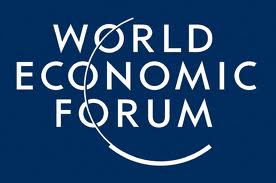 It is not a question of if but when the ASEAN Economic Community will rival the EU
It is not a question of if but when the ASEAN Economic Community will rival the EU- New unified economic bloc will facilitate the free flow of goods and services
- ASEAN is pushing for adoption of common standards and a strengthened centralized body
- For more information about the meeting: http://wef.ch/ea15
Jakarta, Indonesia, 20 April 2015 – In a planned economic community that will link 10 nations across South-East Asia and account for the seventh-largest economy in the world, regional leaders told participants at the 24th World Economic Forum on East Asia that the ASEAN economic community (AEC) will rival the European Union (EU) in the years to come.
“To the extent that ASEAN grows at 5% per annum and Europe by less than 2%, of course we will catch up with Europe; one day we will be there,” said Mustapa Mohamed, Minister of International Trade and Industry of Malaysia. “What we need to do in ASEAN is to grow much faster so we get there much faster, we overtake faster, and probably that will happen in the next 10-15 years.”
He said ASEAN’s largely youthful population, in comparison to an ageing population in Europe, gave the planned AEC a significant edge. The unified economic bloc will form a single market and production base, and facilitate the free flow of goods and services around one of the world’s most dynamic and fastest-growing regions.
Anthony F. Fernandes, Group Chief Executive Officer, AirAsia, Malaysia, agreed. “We have the numbers; 600 million people and a lot of good work. Definitely the AEC can rival the EU,” he said. He added that while the AEC won’t be perfect by the end of 2015, it offers an important platform to build on and, “if it is a true economic community, it will benefit everyone”.
In the critical and exciting months before the AEC comes into effect, non-tariffs barriers and standardization of procedures represent the last mile. “A lot of improvements have been made in tariffs,” said Teresita Sy-Coson, Vice-Chairperson, SM Investments Corporation, Philippines. “Maybe the next step will be the opening up of borders.”
In the sector of tourism, discussion is already under way about the creation of a single ASEAN visa and, in the future, the mobility of ASEAN citizens across borders will be a priority, especially for skilled labour. “Both companies and countries will benefit,” Mohamed said.
Describing widespread migration as inevitable – whether as a result of more open borders, conflict or natural disasters or increasing digitization – William Lacy Swing, Director-General, International Organization for Migration (IOM), Geneva, said: “Migration is not so much a problem to be solved but a reality to be managed.” He added that migration is necessary for skills to be available, “for jobs to be filled, for our economies to flourish”. He said: “It is highly desirable if we have the right policies.”
The leaders also acknowledged the multitude of challenges facing the region. Evelyn Balais-Serrano, Executive Director, Asian Forum for Human Rights and Development, Thailand, suggested that as ASEAN approaches deeper integration, it should ensure that greater protections are first implemented at the national level. “Before we can consider the full AEC, each country should have policies on better protection for migrants, especially for women,” she said. “Without this respect for human rights, there will be this vicious cycle of abuse.”
Looking at lessons to be learned from the EU, the speakers agreed that the ASEAN Secretariat should adopt best practices such as common standards, rules and regulations, and strengthen its centralized body.
The Co-Chairs of the World Economic on East Asia are: Hans-Paul Bürkner, Chairman, The Boston Consulting Group, Germany; John Riady, Executive Director, Lippo Group, Indonesia; Budi Gunadi Sadikin, Chief Executive Officer, Bank Mandiri (Persero), Indonesia; William Lacy Swing, Director-General, International Organization for Migration (IOM), Geneva; and Teresita Sy-Coson, Vice-Chairperson, SM Investments Corporation, Philippines.
